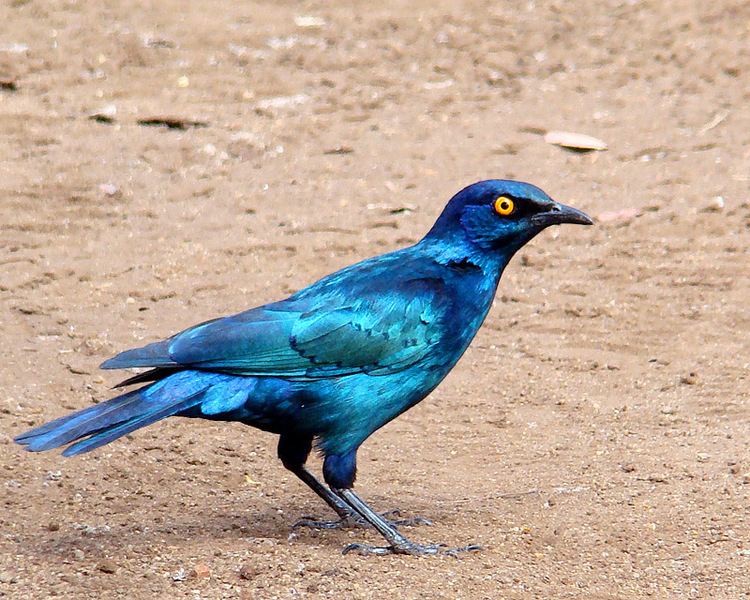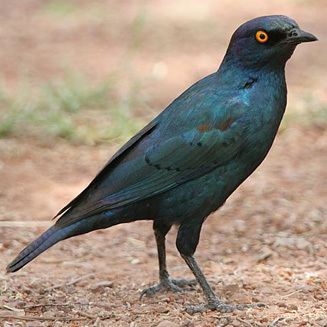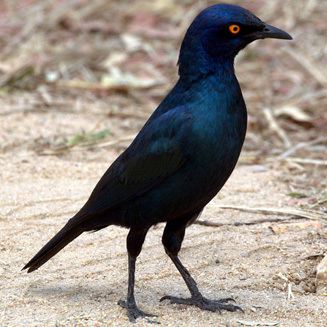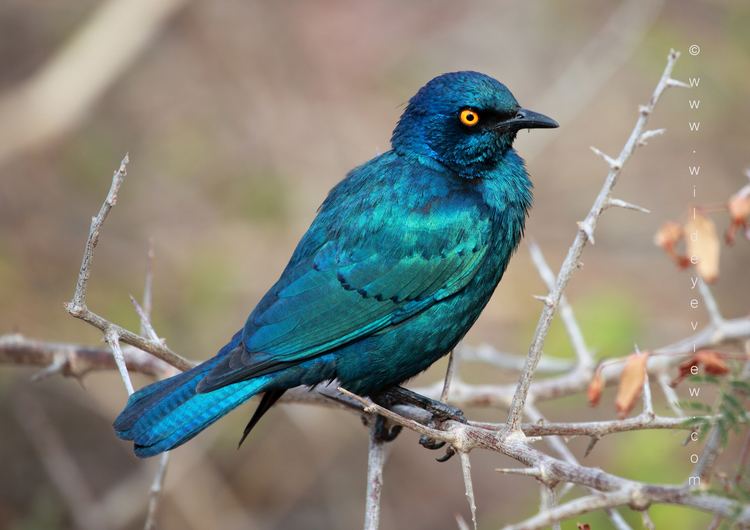Order Passeriformes Higher classification Lamprotornis | Phylum Chordata Family Sturnidae Scientific name Lamprotornis nitens Rank Species | |
 | ||
Similar Bird, Starling, Lamprotornis, Greater blue‑eared starling, Burchell's starling | ||
The Cape starling, red-shouldered glossy-starling or Cape glossy starling (Lamprotornis nitens) is a species of starling in the family Sturnidae. It is found in southern Africa, where it lives in woodlands, bushveld and in suburbs.
Contents

Description

The Cape starling has an adult length of about 25 cm (10 in) and weight of about 100 grams (3.5 oz). The plumage is a fairly uniform bright, glossy colour. The head is blue with darker ear coverts and the upper parts of the body are greenish-blue. It has a lengthy warbling song which may include an imitation of sounds it hears in its environment.
Distribution and habitat

The Cape starling is found in the southern part of Africa. Its range encompasses the extreme south of Gabon, the west and south of Angola, the extreme south of Zambia, the southern half of Zimbabwe, Namibia, Botswana, Lesotho and South Africa. It is a vagrant to the Republic of the Congo but does not breed there. In the other countries in its range it is a resident (non-migratory) species and its total extent of occurrence is about 3,000,000 square kilometres (1,200,000 sq mi). The Cape starling is found where trees in which it can roost and nest are found. It is not a bird of dense forest or of pasture and is not associated with any particular plant type. It does occur in open woodland, plantations, savannah, bushveld, rough grassland, parks and gardens and is quite numerous in the central Kalahari where isolated trees occur.
Behaviour
The Cape starling is a gregarious bird and forms large flocks in the non-breeding season. It usually feeds on the ground often foraging alongside other species of starlings such as the pied starling, the common starling, the greater blue-eared starling, the lesser blue-eared starling, the wattled starling and Burchell's starling. It is habituated to humans and its diet includes fruit, insects and nectar. It sometimes feeds on ectoparasites that it picks off the backs of animals and it sometimes visits bird tables for scraps.
Breeding mainly takes place between October and February but may continue into April in Namibia. It nests in crevices such as holes in trees and out-competes other birds seeking to use these holes. It is a host to the greater honeyguide, a brood parasite that lays its eggs in other birds' nests. In an observed nest in a thorn tree at the edge of the Kalahari, the chicks were fed predominantly on grasshoppers, locusts, ants and beetles, and were also given fruit, insect larvae and other small invertebrates.
